
Source: Pondering, Hovic, Flickr
The process of creating a thesis looks good on paper, but how does it work for an actual writing assignment in your class? Let’s back up a bit and explore the process in detail. Say you have been assigned the task of writing a persuasive essay. You are to pay particular attention to thesis and position. The paper you write must persuade your readers to adopt your way of thinking about an issue of your choosing.
Let’s take first things first. Answer this question: What am I going to write about, and why do I think it is important?
Sometimes, your teacher assigns a persuasive essay on a specific topic or issue. The teacher may also leave it up to you to pick your own topic. In that case, you can brainstorm for issues. Where do you start? You can begin your search for an issue to write about by considering the following questions:
- What issue would address a subject that people care about?
- What issue would probably lead to interesting debate or disagreement?
- What is an issue that I care about and for which I have a definite opinion or position?
- What is an issue that I can write about that deals with only one subject?
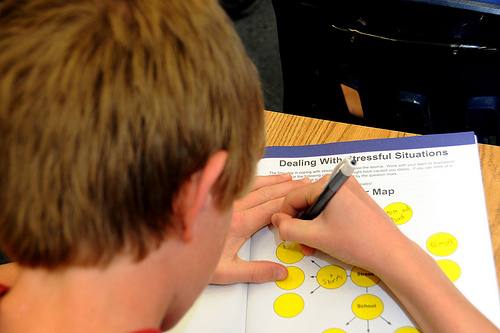
Source: 110224-A-QS632-004.jpg, NGB Counterdrug, Flickr
Brainstorming about issues is easiest if you don’t try to do it in a vacuum. In other words, think about issues you are studying in your classes, issues that people talk about in the hallways and on the news, or issues that represent one of your personal interests such as music, sports, or nature. Do your first research at this point to get to know the details of issues surrounding your subject. This will help you when the time comes to write your thesis statement and even the body of your essay.
For the purposes of this lesson, let’s pretend that you have brainstormed and decided on the topic of “consuming sugar in soft drinks.”
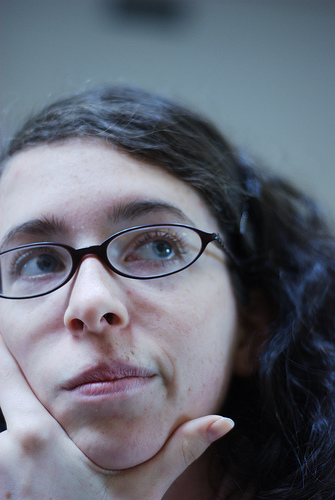
Source: Deep Thought, tubaChuck, Flickr
How do you make this into a thesis statement? Recall that a thesis is a statement or premise supported by evidence.
A thesis statement is a clear, concise, and well-defined statement of the author’s opinion or position on a subject; it is narrow in focus and capable of being supported by evidence.
Your thesis statement is simply a sentence that appears in your introduction. In a concise, brief way, it tells the reader the subject and how you, as the writer, feel about the subject, and because your paper is persuasive, how you want your readers to feel about it after reading your essay.
Getting back to your topic about the consumption of sugar in soft drinks, your first attempt at a thesis statement might be something like this:
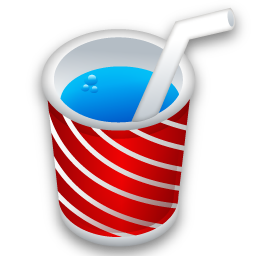
Source: Soft drink icon, iconshock, Wikimedia
Sugar in American diets
This is not a thesis statement because it merely indicates a general subject. No position on the subject is stated. Oh, and this is not even a sentence, but a sentence fragment.
One way to get to a thesis sentence is to take your topic and turn it into a question that interests you. For instance, you might ask the following:
Are students consuming too much sugar?
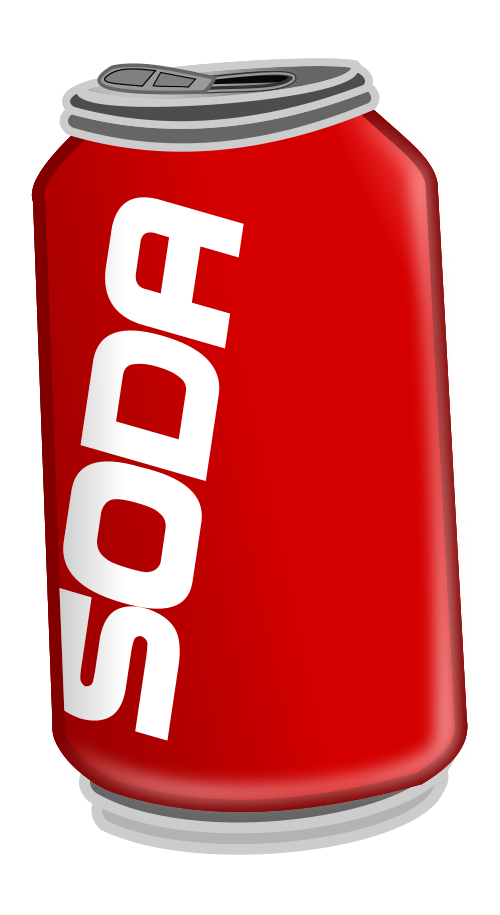
Source: Soft Drink, CoolKid1993,
Wikimedia
If you like the way that turned out, you could take the question and turn it into a statement.
Students are consuming too much sugar.
Is this a proper thesis statement? It does more fully describe your issue. It also says a little about the population: students. It might be a good choice for a persuasive text because it is a subject that has been in the news recently. (In 2013, Mayor Bloomberg of New York City proposed a law that would make large sodas unavailable in stores.) People might easily disagree with your position.
However, your statement is still very broad. Maybe you should think about being more specific about sugar consumption. Suppose you know from listening to the news that soft drinks are responsible for most of the sugar consumption in students’ diets. The following might be an improvement on the thesis statement above:
More attention should be paid to the sugary soft drinks made available in elementary schools because students consume too much sugar.

Source: PAY ATTENTION, John Niedermeyer, Flickr
We’re getting closer, but the sentence above is still too vague to be a complete thesis statement. What does “more attention should be paid” mean? The reader doesn’t know how much attention is “more” or what kind of attention should be paid. Should we be like Mayor Bloomberg and make laws about sugar consumption, or should we just get parents to monitor sugar consumption at home? As you can see, there are all sorts of possibilities for the meaning of “more attention.”
Why don’t we try using some of the facts we know from reading about the topic? Consider the next possibility.
Because American elementary school students consume more than nine times the recommended daily allowance of sugar, elementary schools should replace the sugary beverages in their soda machines with lower-sugar alternatives.
BINGO! This is a proper thesis statement because it clearly and concisely sums up your opinion or position on one particular subject. This sentence does something a good thesis statement should: It directly addresses the issue that you decided upon as a result of your brainstorming session, the issue you care enough about to write a persuasive essay in the first place!

Source: Sugar truck, glamhag, Flickr
One more suggestion about thesis statements: Don’t be afraid to change them as you begin writing. Often, during the course of your research, you will learn more about your subject. As a result, you may want to change your your thesis statement to reflect your new understanding. If you change it, you still need to have a clear idea of your general issue at all stages of your writing. Always remember that your thesis statement functions as your guide; it will keep you on track throughout the entire process of writing.
As you read at the beginning of this lesson, a good thesis statement
- takes a position,
- states your conclusion about a subject,
- addresses a topic people might disagree over, and
- is specific.
Consider the last thesis statement from above: “Because American elementary school students consume more than nine times the recommended daily allowance of sugar, elementary schools should replace the sugary beverages in their soda machines with lower-sugar alternatives.” Does this thesis statement meet the four-step checklist above? Yes, it does.

Source: Class 2010, Amistad Institute, Flickr
You can practice identifying strong thesis statements in the interactive exercise that follows. Read each possible thesis statement and decide if it is a strong thesis statement or a weak one. Click on "Strong Thesis Statement" or "Weak Thesis Statement" to respond.

 Now, using your notes, turn the weak thesis statements from the exercise into strong thesis statements. Refer to the four-step checklist above before making your revisions. When you are finished, check your understanding to see possible responses.
Now, using your notes, turn the weak thesis statements from the exercise into strong thesis statements. Refer to the four-step checklist above before making your revisions. When you are finished, check your understanding to see possible responses. - Pollution is bad for the environment.
- Elementary school children need their parents’ support.
- At least 25% percent of the federal budget is spent on limiting pollution.
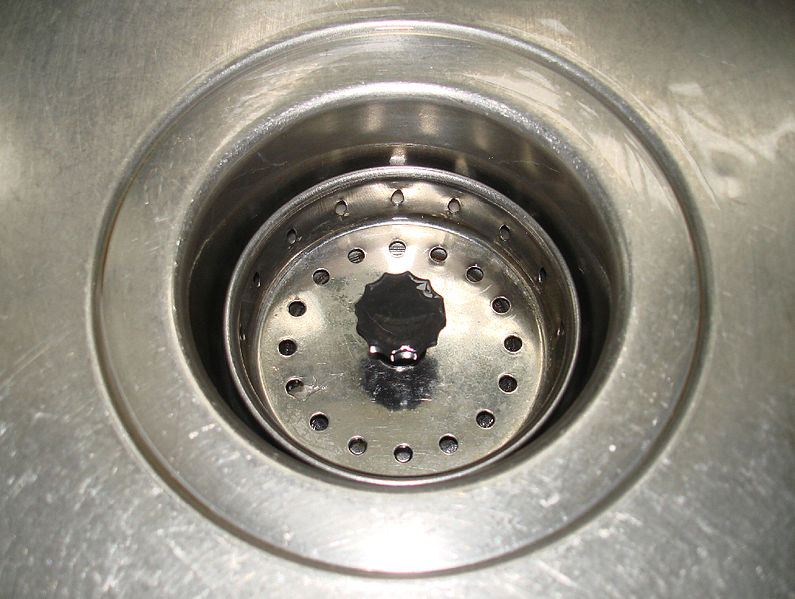
Source: Kitchen sink drain, StStilfehler, Wikimedia

Source: iStockphoto

Source; Emissäo+de+gases+poluentes,
areaprojecto8a, Wikimedia
Sample Responses:
Citizens should be fined for dumping toxic substances down household drains because the toxins affect our local water supply.
Parents of elementary school students should be required to attend an orientation about literacy when the children register for school as a way to encourage parental support for their children’s education.
Because 25% of the federal budget is spent on fighting pollution, citizens should support laws that make corporations pay large fines for polluting.